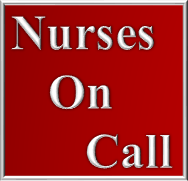In today’s rapidly evolving healthcare industry, the impact of technology on nurse staffing cannot be ignored. With advancements in technology, nurse staffing agencies like Nurses On Call have the opportunity to streamline their processes and better meet the staffing needs of medical facilities. Nurses On Call, located in Pensacola FL, is a trusted nurse staffing agency with over 25 years of experience. Their team of highly qualified RNs and LPNs are equipped with the latest technological tools and resources to provide top-notch care on a temporary or semi-permanent basis. With 24/7 on-call service and a dedicated local support staff, Nurses On Call is committed to ensuring that healthcare facilities have the skilled professionals they need. The impact of technology on nurse staffing is evident in the seamless integration of digital platforms and the provision of comprehensive support for nurses. Reach out to Nurses On Call today at 850-474-9803 to discover how they can support your career.
Introduction
technology has revolutionized every aspect of our lives, and the healthcare industry is no exception. In recent years, advancements in technology have rapidly transformed the field of nursing, greatly impacting nurse staffing and the delivery of patient care. From automated scheduling systems to real-time messaging systems, technology has improved efficiency, communication, and collaboration among healthcare professionals. Additionally, it has enhanced patient care, streamlined recruitment and onboarding processes, reduced administrative burden, and improved decision-making and analytics. However, with these advancements come challenges and concerns, such as training and adaptation, data security and privacy, and maintenance and technical support. In this comprehensive article, we will delve into each of these areas and explore the significant impact that technology has had on nurse staffing.
Increased Efficiency and Productivity
Automated Scheduling Systems
Gone are the days of manually creating and managing nurse schedules. Automated scheduling systems have become a game-changer in nurse staffing, significantly improving efficiency and productivity. These systems use algorithms and real-time data to match the right nurse with the right shift, taking into account factors such as availability, skills, and workload. By automating this process, nurse managers can save a considerable amount of time and effort, allowing them to focus on other critical tasks. Moreover, automated scheduling systems help in reducing errors and conflicts in scheduling, ensuring that every shift is adequately staffed.
Electronic Health Records (EHR)
Electronic Health Records (EHR) have revolutionized the way patient information is recorded, stored, and shared. EHR systems provide a comprehensive and centralized platform for healthcare professionals to access patient data, including medical history, test results, allergies, and medications. This accessibility allows nurses to make informed decisions quickly and accurately, leading to improved patient care. With EHR systems, nurses can easily track and review patient progress, update medical records in real-time, and collaborate with other healthcare professionals, all within a secure and efficient digital environment.
Telehealth and Remote Monitoring
The advent of telehealth and remote monitoring has opened up new possibilities in nurse staffing and patient care. Through telehealth, nurses can provide virtual consultations, monitor patients remotely, and deliver care without the need for in-person visits. This technology has been particularly beneficial for patients in remote or underserved areas, as it eliminates geographical barriers and improves access to healthcare services. By leveraging telehealth and remote monitoring, nurse staffing agencies like Nurses On Call have been able to extend their reach and provide quality care to a wider population.
Improved Communication and Collaboration
Nurse Communication Apps
In the fast-paced world of healthcare, effective communication is crucial for providing safe and efficient patient care. Nurse communication apps have revolutionized the way nurses communicate and collaborate with each other. These apps allow nurses to send secure messages, share important updates, and request assistance, all in real-time. They also enable instant communication between nurses and other healthcare professionals, facilitating seamless coordination and collaboration. Nurse communication apps have significantly reduced response times, improved teamwork, and enhanced overall communication in healthcare settings.
Teleconferencing and Video Calls
Gone are the days when healthcare professionals had to physically gather for meetings or consultations. Teleconferencing and video calls have made remote communication and collaboration possible, even across different locations. Nurses can now attend virtual meetings, participate in educational webinars, and consult with colleagues or specialists from the comfort of their own facility. This technology not only saves time and resources but also improves accessibility to expert advice, ultimately leading to better patient care.
Real-Time Messaging Systems
In critical situations, clear and immediate communication can be a matter of life and death. Real-time messaging systems have become an essential tool for nurses in emergencies and urgent situations. These systems enable nurses to send alerts, notifications, and critical messages to healthcare teams instantly, ensuring quick response times and effective coordination. Real-time messaging systems can also be integrated with other healthcare technology, such as alarm monitoring systems and clinical decision support systems, further enhancing the overall communication and response capabilities of nursing staff.
Enhanced Patient Care
Clinical Decision Support Systems
Clinical decision support systems have become indispensable in the field of nursing. These systems provide nurses with evidence-based guidelines, recommendations, and alerts, helping them make informed decisions about patient care. By analyzing patient data and comparing it to established guidelines, clinical decision support systems can identify potential risks, suggest appropriate diagnoses or treatments, and prevent medical errors. This technology empowers nurses by providing them with valuable insights and ensuring that they can deliver the best possible care to their patients.
Medical Device Integration
Technology has revolutionized the medical device landscape, and the integration of medical devices with nursing workflows has greatly improved patient care. Nurses can now seamlessly integrate devices such as vital sign monitors, infusion pumps, and ventilators with electronic health record systems. This integration allows for real-time monitoring of patient data, automatic documentation of vital signs, and timely notifications of any abnormalities or changes in patient condition. By eliminating manual data entry and reducing errors, medical device integration improves the accuracy and efficiency of patient care, ultimately leading to better outcomes.
Patient Monitoring Systems
Patient monitoring systems play a vital role in enhancing patient care and improving nurse staffing. These systems continuously collect and analyze patient data, providing nurses with real-time information about a patient’s condition. With patient monitoring systems, nurses can detect early warning signs, track vital signs, monitor trends, and intervene promptly when necessary. This technology enables nurses to provide proactive and personalized care, preventing complications and improving patient outcomes. Patient monitoring systems also reduce the need for constant bedside monitoring, allowing nurses to allocate their time and resources more effectively.
Streamlined Recruitment and Onboarding
Online Job Portals and Applications
Technology has transformed the way nurses search for job opportunities and apply to nurse staffing agencies. Online job portals and applications have made the recruitment process more seamless and efficient for both nurses and agencies. Nurses can now search for available positions at their convenience, explore different facilities, and submit their applications online. This convenience has expanded the pool of potential candidates for nurse staffing agencies and has made it easier to find the right fit for specific healthcare facilities.
Automated Interviewing and Background Checks
Gone are the days of manual screening and background checks. Automated interviewing and background check systems have made the recruitment and onboarding process much more efficient for nurse staffing agencies. These systems use pre-recorded video interviews and automated background check processes to streamline the screening and selection of candidates. By automating these tasks, nurse staffing agencies can save time and resources, allowing them to onboard nurses more quickly and efficiently.
E-Learning and Training Modules
Nurse staffing agencies are increasingly leveraging e-learning and training modules to onboard and train new nurses. These modules provide interactive and engaging content, allowing nurses to learn at their own pace and convenience. E-learning platforms offer a wide range of educational resources, including videos, quizzes, and simulations, that help nurses develop their skills and knowledge. By incorporating e-learning and training modules into the onboarding process, nurse staffing agencies can ensure that their nurses are equipped with the necessary skills and competencies to excel in their roles.
Impact on Nurse-Patient Ratio
Automated Patient Assignment
Maintaining an appropriate nurse-patient ratio is crucial for delivering quality patient care. Automated patient assignment systems have emerged as a valuable tool in managing nurse-patient ratios effectively. These systems use algorithms to determine the optimal distribution of patients among nurses, taking into account factors such as patient acuity, nurse workload, and required skills. By automating this process, nurse staffing agencies can ensure that nurses are not overwhelmed with excessive patient loads, thus reducing the risk of burnout and improving patient safety.
Self-Service Check-In Systems
Self-service check-in systems have simplified the check-in process for patients, reducing the administrative burden on nurses. Patients can now check-in electronically, update their personal information, and complete necessary forms online, eliminating the need for manual paperwork. These systems integrate with electronic health record systems, ensuring that all patient information is accurately recorded and readily available to nurses. By reducing administrative tasks, self-service check-in systems allow nurses to focus more on direct patient care, ultimately improving the nurse-patient ratio.
Virtual Nursing Assistants
Virtual nursing assistants have emerged as a valuable resource in managing the nurse-patient ratio effectively. These assistants leverage artificial intelligence and voice recognition technology to perform routine tasks, such as medication reminders, appointment scheduling, and answering patient questions. By offloading these tasks to virtual nursing assistants, nurses can focus on more complex and critical aspects of patient care, effectively managing their workload and enhancing the nurse-patient ratio.
Challenges and Concerns
Training and Adaptation
With the rapid advancement of technology, training and adaptation can be a significant challenge for nurses. It is crucial for nurse staffing agencies to provide comprehensive training and support for nurses to ensure a smooth transition to new technologies. Additionally, ongoing education and continuous learning opportunities should be offered to keep nurses updated with the latest advancements and best practices in technology-enabled care.
Data Security and Privacy
As technology continues to evolve, the importance of data security and privacy cannot be overlooked. Nurse staffing agencies must prioritize data protection and implement robust security measures to safeguard patient information. Compliance with data protection regulations, encryption of sensitive data, and regular security audits are essential to mitigate the risks associated with technology-enabled care.
Maintenance and Technical Support
Technology is not immune to glitches and technical issues. Nurse staffing agencies must have a comprehensive maintenance and technical support plan in place to address any system failures or breakdowns promptly. Proactive monitoring, regular updates, and a reliable technical support team are crucial to ensuring uninterrupted access to technology and avoiding disruptions in patient care.
Reduced Administrative Burden
Automated Documentation and Charting
Documentation and charting are necessary but time-consuming tasks for nurses. Automated documentation and charting systems have simplified this process, reducing the administrative burden on nurses. These systems automatically capture and record patient data, eliminating the need for manual entry. By streamlining this administrative task, nurses can spend more time on direct patient care, enhancing overall efficiency and productivity.
Billing and Claims Management
Technology has transformed the billing and claims management process, greatly reducing the administrative burden on nurses. Automated billing and claims management systems integrate with electronic health record systems, ensuring accurate coding and billing for services provided. These systems automate the generation and submission of claims, reducing the time and effort required to process reimbursement. By optimizing the billing and claims management process, nurses can dedicate more time and energy to patient care.
Inventory and Supply Chain Management
Ensuring an adequate supply of essential medical equipment, medications, and supplies is essential for delivering quality patient care. Technology has revolutionized inventory and supply chain management, simplifying the procurement, tracking, and management of supplies. Automated systems can monitor inventory levels, generate purchase orders, and track the movement of supplies, ensuring that nurses have access to the necessary resources when they need them. By optimizing inventory and supply chain management, nurse staffing agencies can reduce administrative tasks and minimize the risk of shortages or stockouts.
Improved Decision-Making and Analytics
Healthcare Analytics and Big Data
Healthcare analytics and big data have opened up new possibilities for informed decision-making and quality improvement in nursing. By analyzing vast amounts of patient data, healthcare analytics can identify patterns, trends, and insights that can inform clinical decision-making. Nurses can leverage these insights to provide personalized and evidence-based care, improving patient outcomes and satisfaction.
Predictive Modeling
Predictive modeling has the potential to revolutionize nurse staffing and patient care. By analyzing historical data, predictive models can forecast demands for nurses, enabling nurse staffing agencies to optimize their resources and ensure adequate staffing levels. These models can also predict patient outcomes and identify areas where interventions may be required, allowing nurses to proactively address potential issues before they escalate.
Real-Time Dashboards
Real-time dashboards provide nurses and nurse managers with a comprehensive and intuitive overview of key metrics and performance indicators. These dashboards display real-time data on patient volumes, nurse-patient ratios, and other critical factors, empowering nurses to make informed decisions. Real-time dashboards also facilitate effective communication and collaboration among healthcare teams, ensuring that everyone is aligned and working towards common goals.
Conclusion
Technology has undoubtedly made a significant impact on nurse staffing, revolutionizing the field and enhancing patient care. Automated scheduling systems, electronic health records, and telehealth have improved efficiency, productivity, and accessibility in nurse staffing. Improved communication and collaboration are facilitated through nurse communication apps, teleconferencing, and real-time messaging systems. Enhanced patient care is achieved through clinical decision support systems, medical device integration, and patient monitoring systems. Streamlined recruitment and onboarding are made possible by online job portals, automated interviewing, and e-learning modules. Technology also addresses the nurse-patient ratio through automated patient assignment, self-service check-in systems, and virtual nursing assistants.
However, along with these advancements come challenges and concerns. Training and adaptation, data security and privacy, and maintenance and technical support are crucial aspects that need to be addressed. Additionally, technology has reduced the administrative burden with automated documentation and charting, billing and claims management, and inventory and supply chain management. Improved decision-making and analytics are achieved through healthcare analytics, predictive modeling, and real-time dashboards.
As we continue to embrace technology in nurse staffing, it is essential to strike a balance between leveraging its benefits and addressing the challenges it presents. By doing so, nurses can provide even better care to their patients, and nurse staffing agencies can optimize their resources and operations. With the right approach, technology can contribute to a more efficient, productive, and patient-centered healthcare system.





